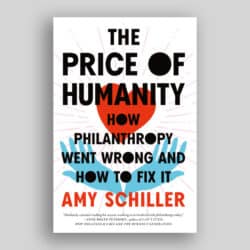By Sheila Arvin McLean, Rona Kluger and Robert Henrey
In collaboration with the member firms of Coopers & Lybrand (International)
Published by INTERPHIL, 701 North Fairfax Street, Alexandria, Virginia, 22314-2045, U.S.A., 1990, pp. 173, US $35
REVIEWED BY COLIN GRAHAM
Ernst & Young
Modern charity law, with its roots in an English statute of Elizabeth I (the Charitable Uses Act of 1601), has been intertwined with tax law. Often both government and charities work in the “charity” fields-relief of poverty, advancement of education, and benefit to community. Recognition of this by government has meant tax relief in some form for many aspects of charitable giving as an incentive to donors.
Formal tax-incentive structures to enhance charitable giving were devised in this century, this book points out, and in the last 20 years social scientists and lawyers have begun to study the impact of tax regulations on giving patterns. The objective of the authors is to provide a concise in-depth study of the tax and fiscal treatment of charities and charitable contributions among differing jurisdictions that could be useful to those involved in the voluntary sector: government policymakers; corporate contributions staff, particularly those of multinational corporations; trust and foundation administrators; and charities themselves, particularly those who actively seek funding across international boundaries.
Essentially the book is a survey of charity tax law in 15 OECD countries: 11
European countries, Australia, Canada, Japan, and the United States-societies that share certain practices, have similar economic systems, and are predominately free market or mixed economies. The survey used a questionnaire that explored the kinds of charitable entities entitled to tax advantages and the official guidelines for conducting their activities, and also explored the tax treatment of individual and business donors, focusing in both areas on the international aspects of charitable giving.
In 173 pages covering 15 countries you should not expect to get definitive tax advice or an outline of tax law on which to base significant decisions, nor do you. In this book you get, instead, from the authors and Coopers & Lybrand, highlights that could be useful to those looking for an initial picture of the situation in particular countries and to those looking for an overall sense of developments in them.
The authors point out that, in all the surveyed countries, government, usually through the tax authorities, plays a major role in the affairs of qualified charitable entities. While generally the survey results show there is uniformity concerning the kinds of charitable activities that qualify for tax benefits, there were a number of differences indicated, particularly in the treatment of contributions for religious purposes. In some countries, churches are treated differently because there are church taxes-Switzerland and Sweden for example. The survey also found the rules for the deductibility of donations to reduce the taxable incomes of individuals and of corporations vary widely.
The country-by-country discussion serves to point out as much as anything the need to build on this first effort and to undertake substantial cross-border studies of tax policies and social policies as they are reflected in government interaction with, and support and restraint of, endeavours by charities to serve society. In particular the wide variation in tax incentives in these 15 countries indicates that more study of private initiatives on social and economic issues and on the effectiveness of various incentives is needed to assist both public policy makers and advocates and defenders of various charitable activities.
The Family That Gave It All Back: Entrepreneurs in Philanthropy-The Devonian Foundation
By Fred M. Diehl
Published by The Devonian Foundation, Calgary, Alberta, 1989, pp. 88
REVIEWED BY JOHN D. GREGORY
Editor, The Philanthropist
This little book records the considerable accomplishments of the Devonian Foundation of Calgary over the past two decades. Although its coverage of the topics is brief, the work still fascinates for its glimpse of imaginative philanthropy at work.
The Devonian Foundation ranks, or rather ranked, among the richest in Canada. It has had assets of nearly $80 million arising from the oil wealth of Eric Harvie and subsequent investments. However, the Foundation did not justify a book, even self-published, simply for its assets. Three characteristics make it noteworthy: first, since 1973, it has deliberately spent its capital as well as its income in order to maximize its benefits to the public, fully intending to spend itself out of existence in a generation; second, it has chosen its projects according to public and private criteria that have helped ensure productive use of the funds; third, it has paid close attention to the management of its projects both before and after its investments, to promote their continued success.
A fourth point could also be noted: its openness. The Devonian Foundation has published its operating guidelines since 1973. It has not only reported to, but it has consulted with,Revenue Canada officials frequently over the years to ensure its operations have complied with enlightened public policy. It publishes annual reports reflecting the results of its spending. The present book, though admiring in tone, notes public criticism of some of the projects of the Foundation and some initiatives that the Foundation itself considers failures.
According to the book, the motives for spending both capital and income seem to have been twofold. The first is to avoid having to reinvest part of the income in the foundation itself to maintain its value. One could reply that the reinvestment would be a small price (generally under half of income) to ensure the maintenance of such a valuable public resource.
The second motive was to spend the money while the founders were around to control its destination. The author mentions the frustration of Henry Ford II with the “bureaucrats” who came to control the Ford Foundation and who did not share the intentions of his founding grandfather. However, it may be argued that aims have to change from those of the founders as the generations come and go, if the projects supported by the foundation are to continue to help the community. It is obviously perfectly legitimate, however, for philanthropists to decide that they will benefit their communities now rather than indefinitely into the future. Not only do they improve chances of making relevant gifts, they can greatly increase the impact of their donations by combining capital and income.
The size of the donations of the Devonian Foundation bears witness to this. The Devonian Gardens in Calgary have received over $6 million from the Foundation; the Calgary Zoological Foundation, more than $1 million; the British Columbia Parks Program, over $2 million. Sixteen projects of the Devonian Foundation received over $1 million each from the Foundation in the first 16 years of its operation. (The book contains a complete list of projects and donations to them.) Gifts from income alone could not have achieved such a record.
The Foundation has chosen its projects according to guidelines first published in 1973 and followed until 1989, when decreasing funds required a narrowing of focus. Among the aims were: to develop the Foundation’s own projects rather than contribute to general appeals; to choose projects that would not have been done at all without the participation of the Foundation; and to co-operate with other foundations and governments to avoid duplication of effort. Even where the Devonian Foundation’s contributions have been publicly challenged, as in the construction of a bicycle path on the Stanley Park seawall in Vancouver, the project was initiated by the community-in this case the Vancouver Parks Board. Approval of the proper political authorities was always a precondition for participation in a project. If this meant that a community effectively rejected the benefit of a project, that decision was respected.
The third aspect of the Foundation’s operations worth noting is laconically expressed in its guidelines as, “associates will be appointed to assist in originating and carrying out projects”. Thus, although the prime responsibility for projects was not assumed by the Foundation, it usually required that it be allowed to maintain management participation (for example, by appointing members of the Board of Directors of the projects) until it could be certain that the operations were on a sound permanent footing. Further contributions to the projects depended on positive reviews by the Foundation’s representatives.
Projects were generally not undertaken unless local authorities were prepared to commit the resources to ensure their continued operation (sometimes with a fund established for that purpose by the Foundation). In short, the Devonian Foundation donated as if it were investing, with an eye to the long-term effect of the money.
Its donations can be divided into three classes. The first is works for the beautification of the environment, broadly conceived. In this category are the indoor year-round Devonian Gardens, the first and largest project undertaken. Another project under this head is “Main Street, Alberta”, in which communities were helped to restore and maintain their main streets, a project intended to benefit everyone in the community, not just one or other sector. A third is the Parks Program, by which both blocks of public park and public pathways along watercourses through Western cities were acquired by the Foundation and turned over at no cost to public authorities.
The second major class of project supported scientific research across the country. Among the activities brought into existence in part through the efforts of the Devonian Foundation were a Centre for Cold Ocean Research Engineering-C-CORE-in Newfoundland and a centre for the Veterinary Infectious Diseases Organization in Saskatoon, which managed to attract Alberta Heritage Fund money as well. The Frontier Engineering Research Centre-C-FER-was created at the University of Alberta.
The third class of operation supported the preservation of our heritage in the West. Among the projects were the Dugald pioneer Costume Collection in Manitoba, the Benjamin Chee Chee Collection of that artist’s work in Thunder Bay, Ontario, and the O’Keefe settlers’ ranch in British Columbia.
Foundations in Canada arise from different sources and serve different ends. The best can act as “venture capitalists” in the nonprofit sector, stimulating imaginative possibilities that require financial and sometimes managerial assistance to be realized. The Devonian Foundation has operated effectively within this field because of the clarity with which it defined its intentions at the outset and its unusual decision to invest its capital as well as its income in its “ventures”.
Diehl’s book may leave both other foundations and those with ideas for projects wanting more information on how the experience can be repeated elsewhere. It is a tantalizing introduction to the possibilities of imaginative philanthropy.


